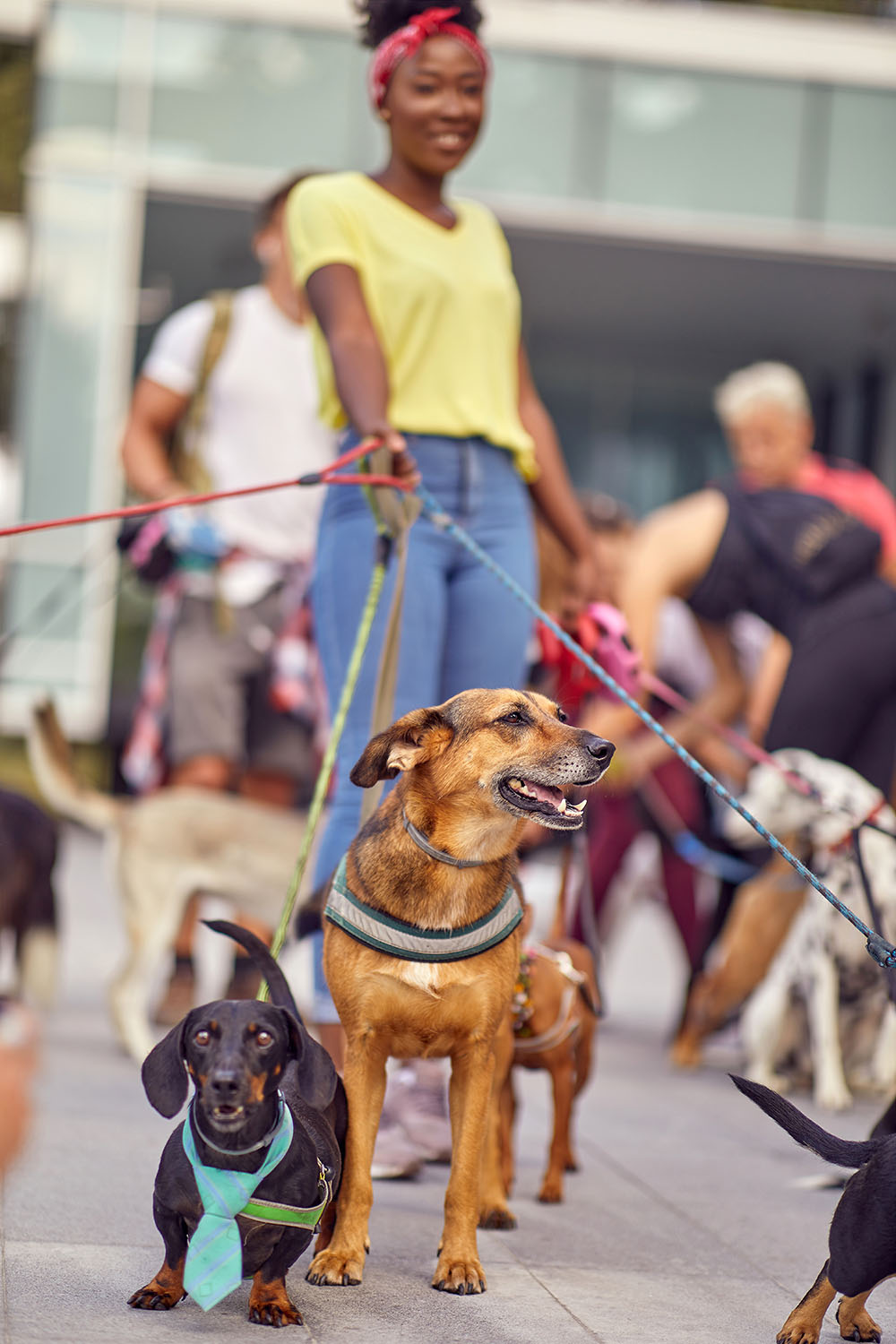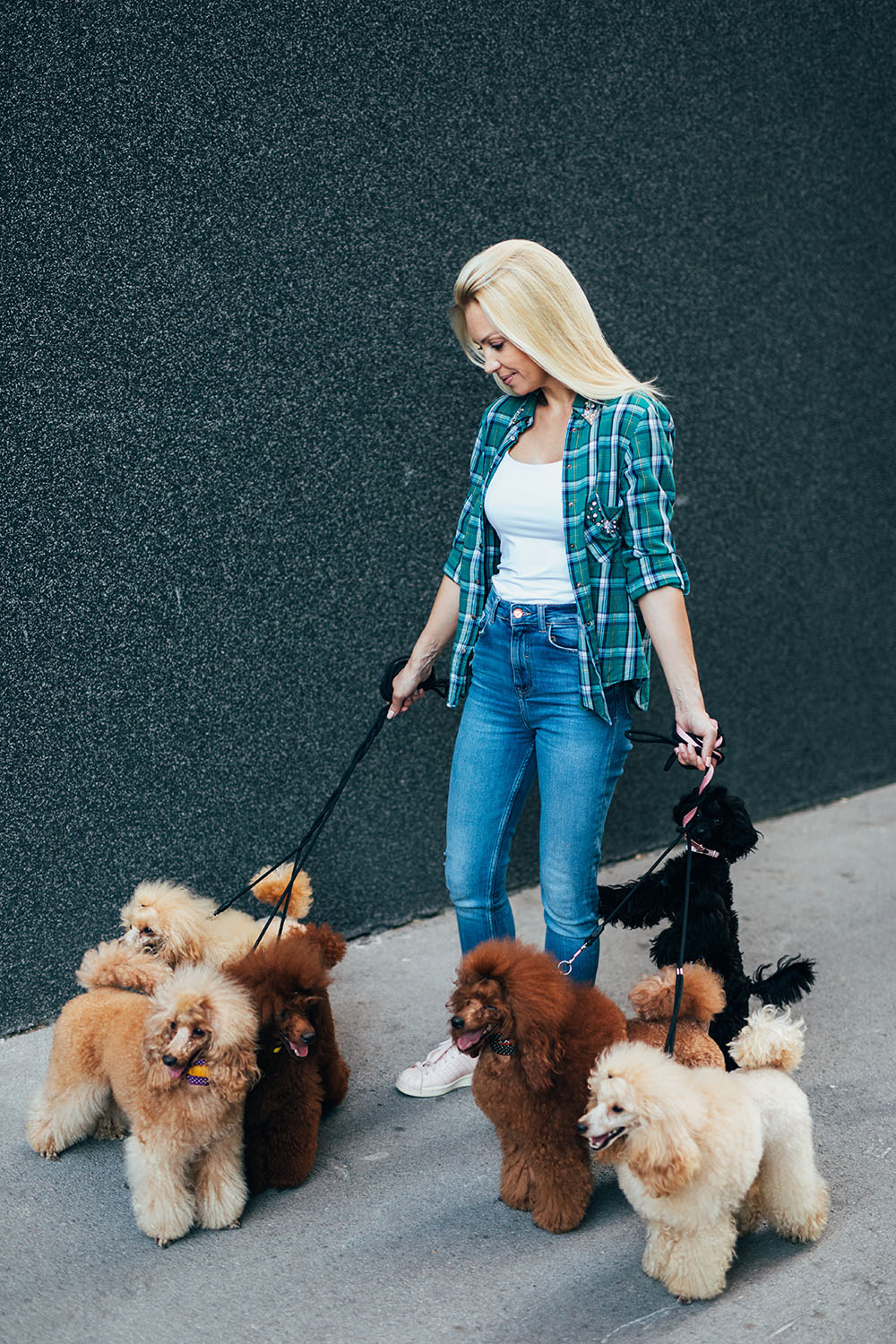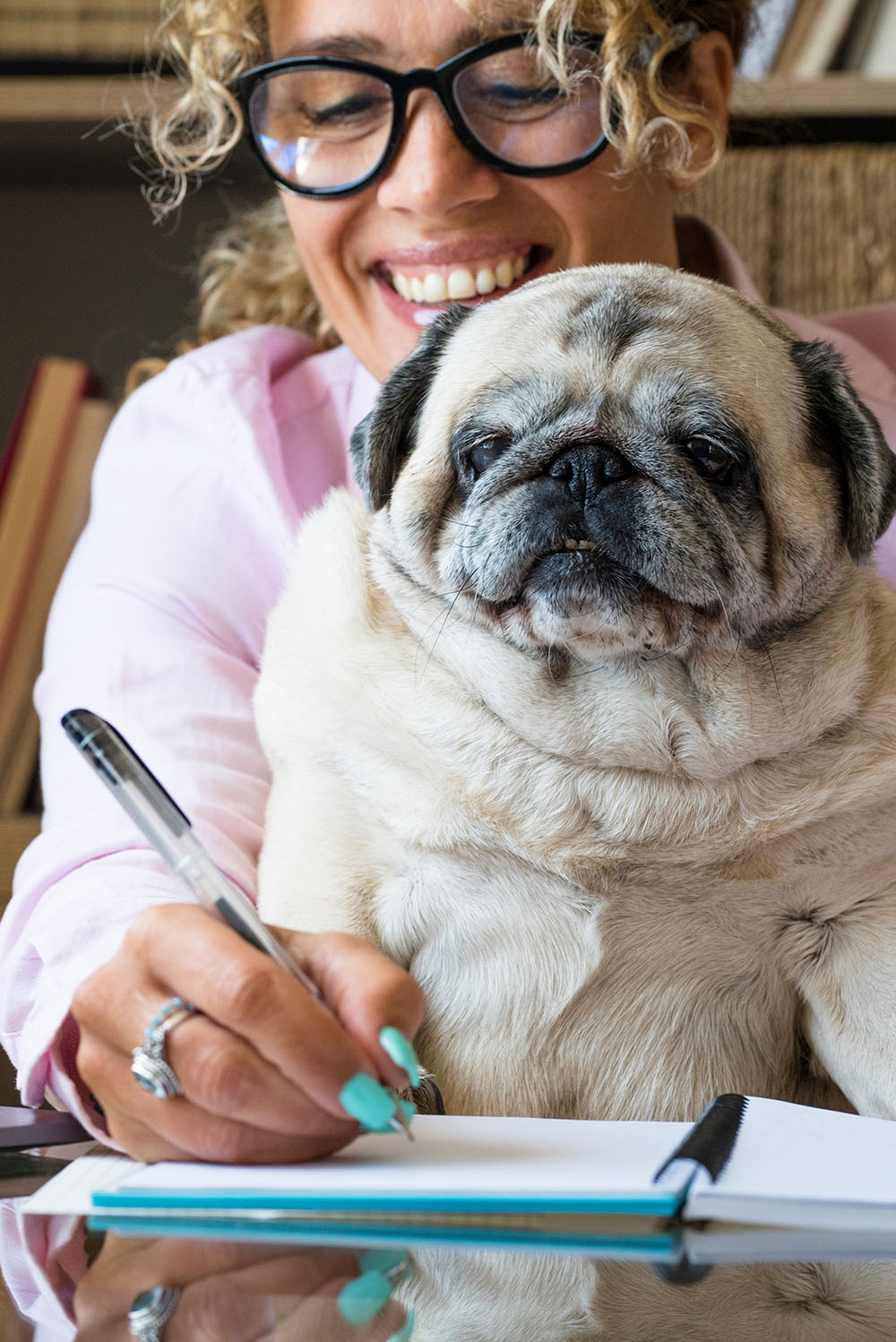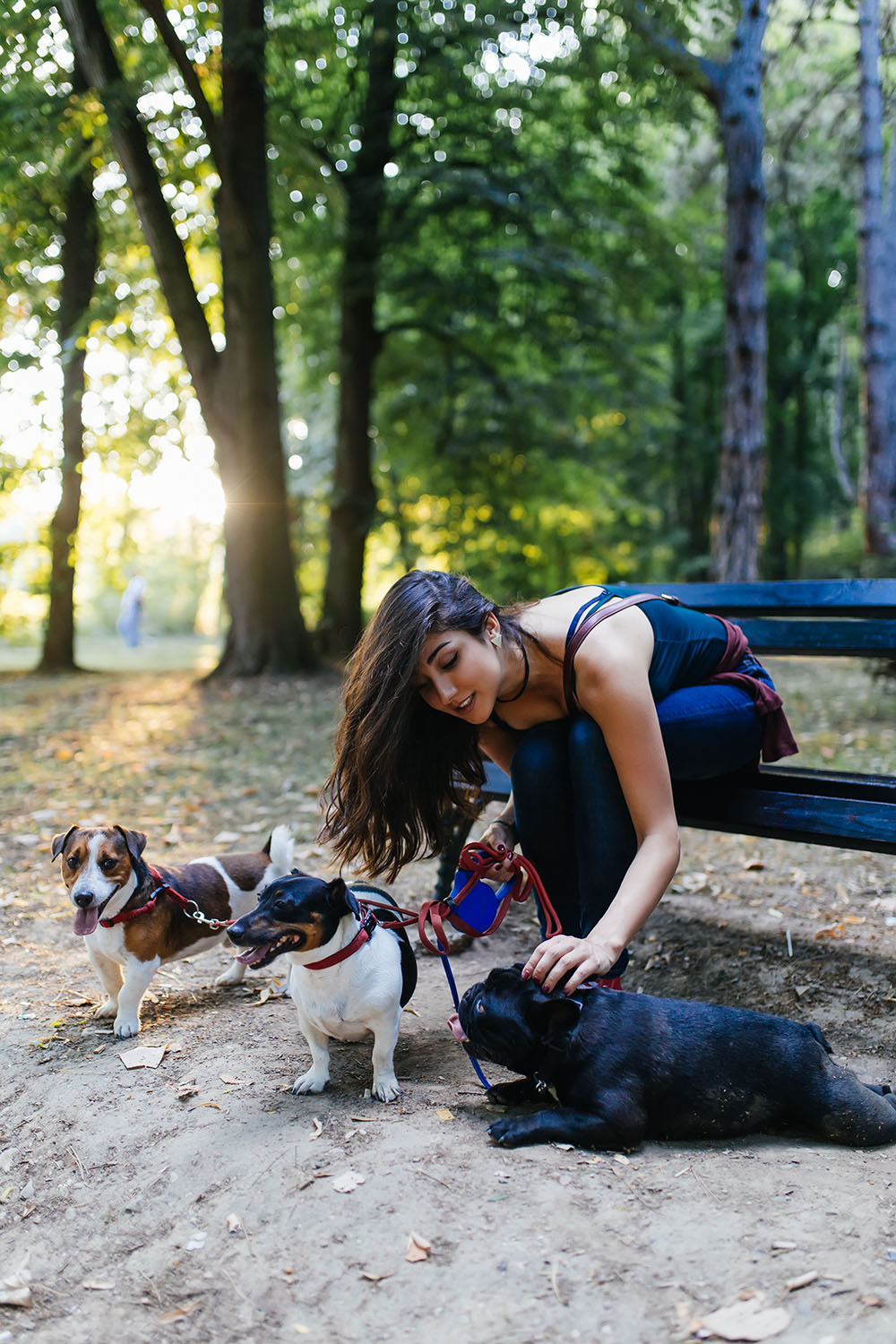Dogs have trouble enduring intense heat and can become dehydrated or overheated easily. This may cause your furry friend to experience heatstroke, which never does them good. So, what is the safe dog walking temperature? Let’s find out so that you can avoid this overheating problem in the future!
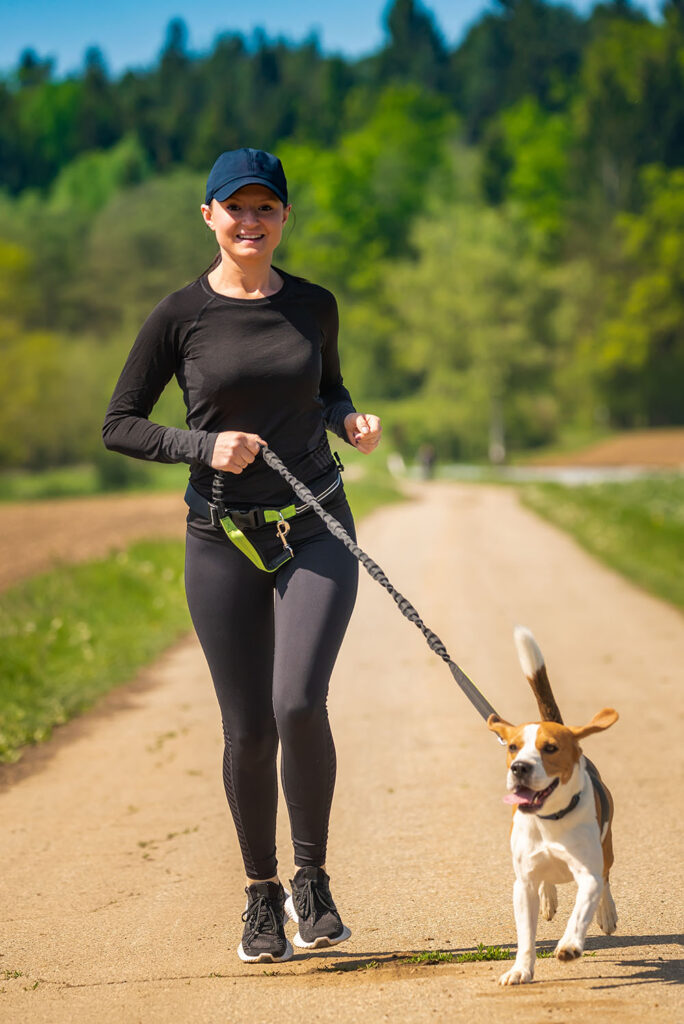
In this article:
When It Is Too Hot To Walk Your Dog?
Generally speaking, most dogs are susceptible to heat stroke at temperatures exceeding 89°F. Therefore, you should avoid taking your furball for a walk when the temp is 90°F or higher. However, the heat tolerance varies depending on their breeds, size, and age.
For example, activities outside in air temperatures exceeding 82°F might be dangerous for some dogs, while 70° to 77°F can be too hot for certain breeds.

We have to warn you that the hot temperature is not the only concern. Another thing you need to worry about is high humidity. Dogs find it more difficult to cool off in humid weather because panting loses some of its moisture-evaporating power.
The best advice we can give you is to avoid exercising your dog outside if the combined temperature (in degrees Fahrenheit) and humidity level equal 150 or higher. For instance, if that day is 80°F with 80% humidity, you should cancel the walking session and keep your four-legged friend inside.
To make it easier for you, we have made a dog walking temperature chart. Just follow it, and your pup will be safe.
Dog Walking Temperature Chart
| Temperature (Fahrenheit) | Suggestion |
| 100° | Too hot – No walking |
| 90° | |
| 89° | |
| 88° | Dangerous temps for all pups, especially the big ones! |
| 87° | |
| 86° | |
| 85° | |
| 84° | |
| 83° | |
| 82° | |
| 81° | |
| 80° | No walking for dogs with low heat tolerance. |
| 79° | |
| 78° | |
| 77° | |
| 76° | |
| 75° | Overheating is not a problem for small or medium-sized dogs, but it can be for some large breeds. |
| 74° | |
| 73° | |
| 72° | |
| 71° | |
| 70° | |
| 69° | Not recommended to walk for double-coated breeds; Low risk for small and medium dogs. |
| 68° | |
| 67° | |
| 66° | |
| 65° | |
| 64° | Safe to walk for all pups! |
| 63° | |
| 62° | |
| 61° | |
| 60° |
Signs Of Overheating You Should Pay Attention To
Obvious Discomfort
Discomfort equals something is wrong with the dog. Keep an eye out for symptoms, including difficulty getting comfortable, restlessness, and excessive panting. When you notice your pup keeps seeking out cool surfaces, it might be trying to stay away from the extreme heat.
Diarrhea Or Vomiting
Severe dehydration may result from overheating. This then results in an upset stomach, which leads to vomiting and severe diarrhea that may or may not contain blood clots.
Drool Intensely
Drooling is natural, but excessive drooling is not. Pets may salivate more than usual when they are attempting to chill down. When you notice your beloved pet’s drools seem stickier and thicker, this means your little one is struggling with the heat.
High Heart Rate
A healthy dog’s heart rate is quite slow in average temperature conditions. But in case of fighting with the heat stress, the pups will release heat by dilatation of the blood vessels. Your dog is likely pumping blood from the extremities to the critical organs, which is why their heartbeat is so rapid.
Tips For Safe Dog Walking During Summer Months
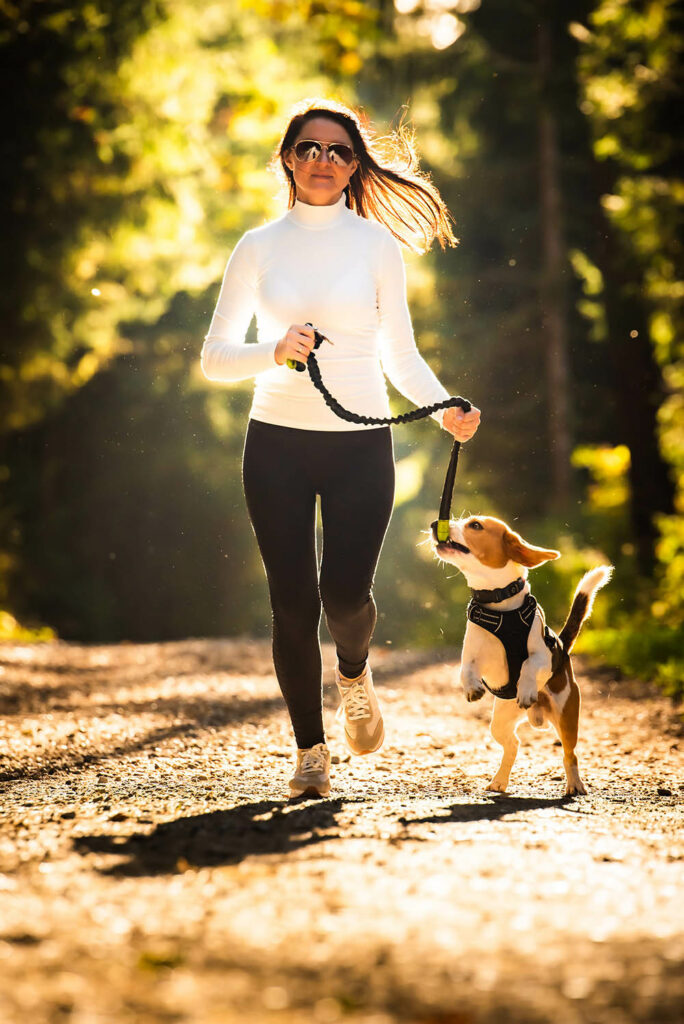
Check The Temp
Before you step outside, take a quick temperature reading with your hand to ensure it’s not too hot. Here’s our tip: Press the back of your hand into the earth and maintain that position.
Suppose you can’t place your hand there for five seconds; it means you should wait until the ground cools down to take your dog for a walk. If not, the dog’s paws will likely get burned.
Plan The Walking Time
In most cases, the temperatures are highest at noon and later hours of the afternoon. We advise against taking your dog for walks later in these time slots.
Instead, try the morning, after sunset, or the evening, as these are the best times to walk your dog in the summer. This guarantees not just a drop in temperature but also some cooling time for the ground, making it safe for your dog to walk on.
But a walk in the afternoon is fine in winter or cold weather, as it will ensure your pup stays warm during the stroll.
Be Well Equipped
If you plan to walk farther than just around the neighborhood, prepare some cool water and food. It’s common for dogs to become dehydrated in hot weather, so bringing a bottle of fresh water is a must.
Never allow your dog to drink from ponds or puddles since this could make your companion dog severely ill.
Change The Strolling Route
Modifying the length and location of your typical walking route is another smart strategy. Our advice is to take your dog for shorter, less strenuous walks during extreme weather to minimize their activity intake.
We often take our clients’ dogs to local parks where there’s plenty of shade. Just follow this tip, and we guarantee both you and the canine will appreciate it.
Frequently Asked Questions
Can I Walk My Dog In 80-Degree Weather?
It depends on the breed and its heat tolerance. However, when it’s 80 degrees out, we suggest not letting your dog outside for extended periods of time.
Instead, make sure he has plenty of drinking water and shade, and watch out for any early warning symptoms of heat stroke or heat exhaustion.
Does It Hurt Dogs To Walk On Hot Pavement?
Yes. Like asphalt or fake grass, pavements may get hot and uncomfortable for dogs, causing blisters and even burning paw pads. Thus, it is advisable to avoid letting your pup out during the hottest time of the day, often at noon or the beginning of the afternoon.
How Can I Protect My Dog’s Feet From Hot Pavements?
Regular moisturizing of your dog’s feet will help avoid paw injuries such as cuts, cracks, or peeling, reducing the risk of burns caused by walking on hot surfaces. Be careful to moisturize with paw wax or a veterinarian-approved moisturizer that is safe for pets.
The Bottom Line
We can all agree that a temperature over 89°F is too much for most canines to handle. When it excites the warned temp, avoid taking your dog outside. You can try to find other alternatives, such as playing at home, swimming in an indoor pool, etc.
The point is, don’t let your dog out in the direct sun and heat. This way, you can fully protect your furry while spending some quality bonding time with them. All wins!
View more:


